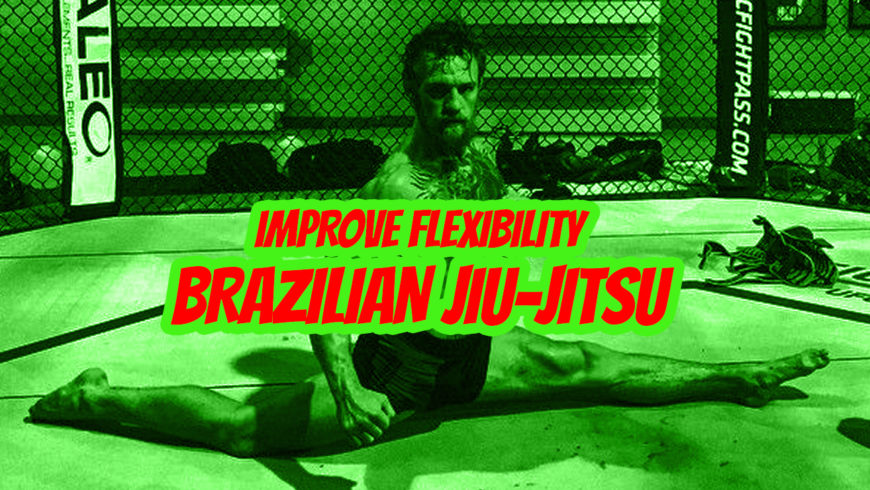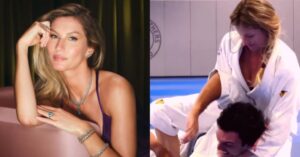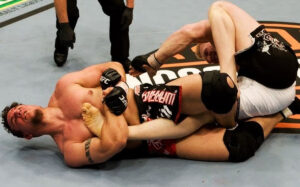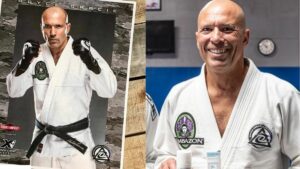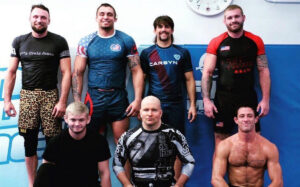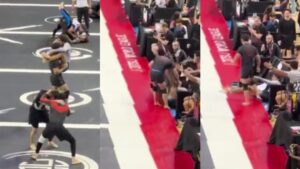Since the foundation of jiu-jitsu, we have seen the constant evolution of skills and training methods. Like in any sport, innovative methods are always there to enhance the performance and health of the athletes.
Every member of the Gracie family is the innovator in some way. But, one of the true game-changers was the famous Rickson Gracie. His innovations were revolutionary and have helped BJJ rise and evolve. Rickson Gracie was the first one to introduce the benefits of flexibility in jiu-jitsu.
In the beginnings, the BJJ technique and moves were mechanical. So, Rickson began doing yoga and gymnastics exercises to become more flexible. He believed this would give him a great advantage over the others.
As a result, this new style was a mixture of flexibility and a more relaxed approach to BJJ. The flexibility allowed Rickson to dominate the jiu-jitsu competition and establish himself as one of the greats. For many, he was a true innovator and much ahead of his time.
Apart from its effects on the mats, flexibility plays a key role in the health of the athletes as well. The thing is, BJJ sessions include endless hand-to-hand rolling’s on the mats. Thus, it is crucial to have the ability to twist the joints and put them in awkward positions without hurting yourself. Regularly stretching will keep the body loosen and prevent injuries from occurring.
The great thing is, you don’t have to spend hours doing various exercises. Becoming flexible requires consistency, dedication and a bit of time during the day.
How to Improve Flexibility for Brazilian Jiu-Jitsu?
When someone mentions flexibility, what is the first thing that comes to your mind? Of course, stretching and yoga exercises. This is because they are the most popular and practical ways to improve flexibility for jiu-jitsu and have many health benefits. What’s more, almost every athlete in the world has stretching and yoga exercises in their schedule.
Stretching is one of those things that most of us avoid. Trust us, once you experience the benefits, it will become your favorite part of the training. Stretching yourself before and after the training reduces the risk of potential injuries and sore muscles. Also, it will make you feel more relaxed and comfortable in your body. What’s more, it boosts the flexibility and helps you recover from injuries and sore muscles.
For some people, the first experiences with these kinds of exercises are painful. That said, if you have never stretched before, begin with a proper warm-up and don’t test your limits.
On the other side, Yoga is great for its large collection of benefits. Developed in the Indian subcontinent, yoga is enhancing both physical and mental health. What’s more, jiu-jitsu and yoga are a perfect combination. This mixture helps you develop many moves and joint motions which will result in greater balance and control over your body. It doesn’t matter if you use yoga for flexibility or relaxation. Its benefits are great and will make your jiu-jitsu experience more pleasant.

Best exercises to improve flexibility for Brazilian Jiu-Jitsu
The stretching and yoga exercises BJJ athletes perform the most are the ones targeting the hip flexors and shoulder muscles. Every single jiu-jitsu position, both offensive and defensive requires a high flexibility of the hips.
The truth is, shoulders are not as important as hips in terms of the technique. But they are taking serious punishment during the rolls. Thus, keeping them healthy is very important.
We’re bringing you the best stretching and yoga exercises for increasing flexibility. Adding these into your training program will make a huge difference in a short period of time!
King Arthur Stretch
Hip flexors are perhaps the strongest and most important muscles in a body of BJJ students. Basically, these muscles connect the upper and lower body segments which BJJ guys are using all the time. Over time, they can become tight and it is very important to stretch them regularly.
The “King Arthur” pose or exercise is pure hell for any person with tight hip flexors. But this stretching exercise will keep your lower back strong and safe from the potential injuries.
“King Arthur” pose is very intensive. Also, it’s even harder because you need to maintain a proper balance while feeling serious pain. But, there is no easy way out as this is probably the best exercise for increasing flexibility in jiu-jitsu.
Also, we have to mention that you shouldn’t perform this exercise before training or while being cold. You should either warm-up or perform it after the training session as most people do.
Reclined Spinal Twist
Reclined spinal twists are a great way to recover your body after a brutal workout and make the spine more flexible. As its name suggests, spinal twists will positively affect the spine, hips and abdominal organs.
Performing reclined spinal twists massages internal organs and stimulates the body’s natural detoxification process. As you can see, the benefits of the pose are endless. For jiu-jitsu athletes, the reclined spinal twist is the perfect exercise. It stretches both upper and lower body segments which are very important for jiu-jitsu.
The best time to perform this exercise is right after the long training session. This will help you recover faster, avoid the possible pain and relax. Yet, some people like to twist right before they go to bed. In the best-case scenario, you should perform it in the morning and evening.
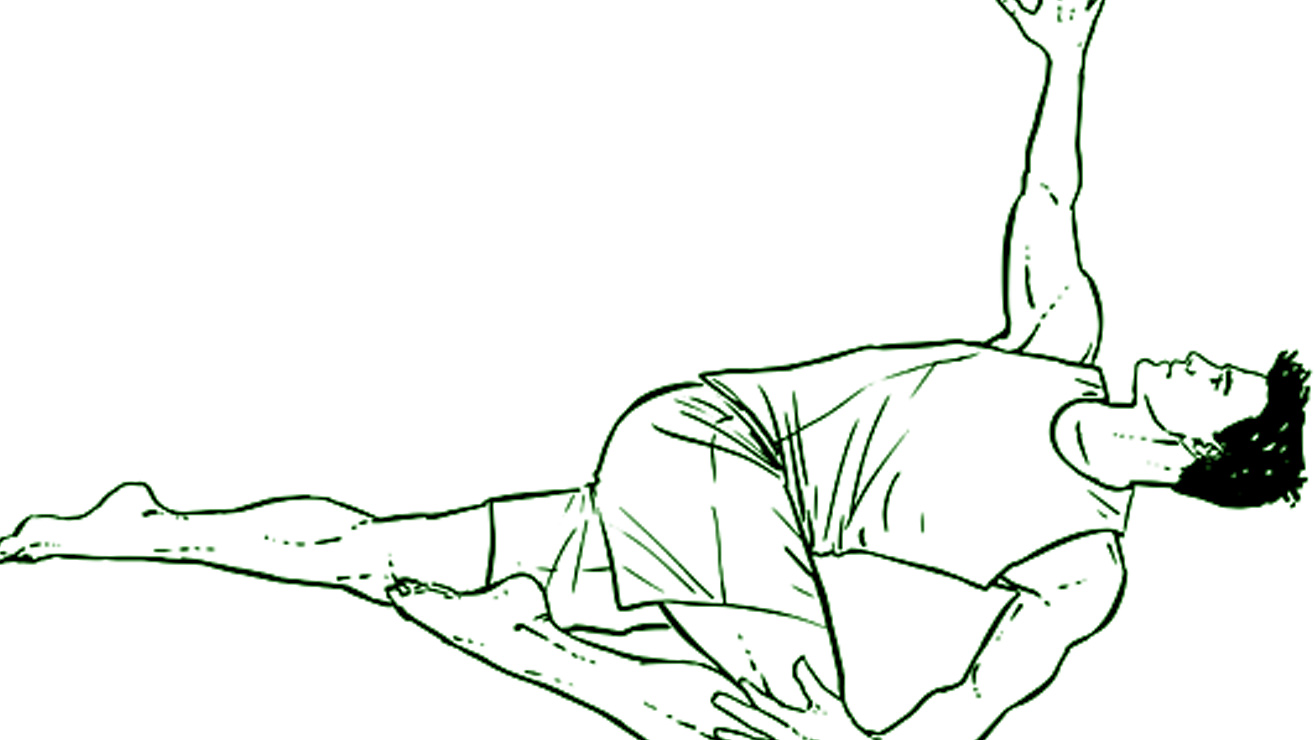
Warrior I pose (Virabhadrasana I)
The first out of three versions of the yoga warrior pose is one of the most beneficial since it covers the entire body. Adding this pose into your plan will improve your strength in the legs, open the hips and chests. What’s more, the warrior I pose prevents many chronic hips, knees and shoulder injuries from happening and also improves the blood flow and respiration.
After just one week of doing yoga exercises, you will be amazed by how these simple stretching exercises can make you feel better and stronger. Since jiu-jitsu requires both flexibility and calm state of mind, performing the warrior I pose will help you improve both of these aspects.
That said, it’s not a surprise that this pose is one of the most popular among the jiu-jitsu athletes. When feeling comfortable, proceed with adding the other two versions of the warrior pose.
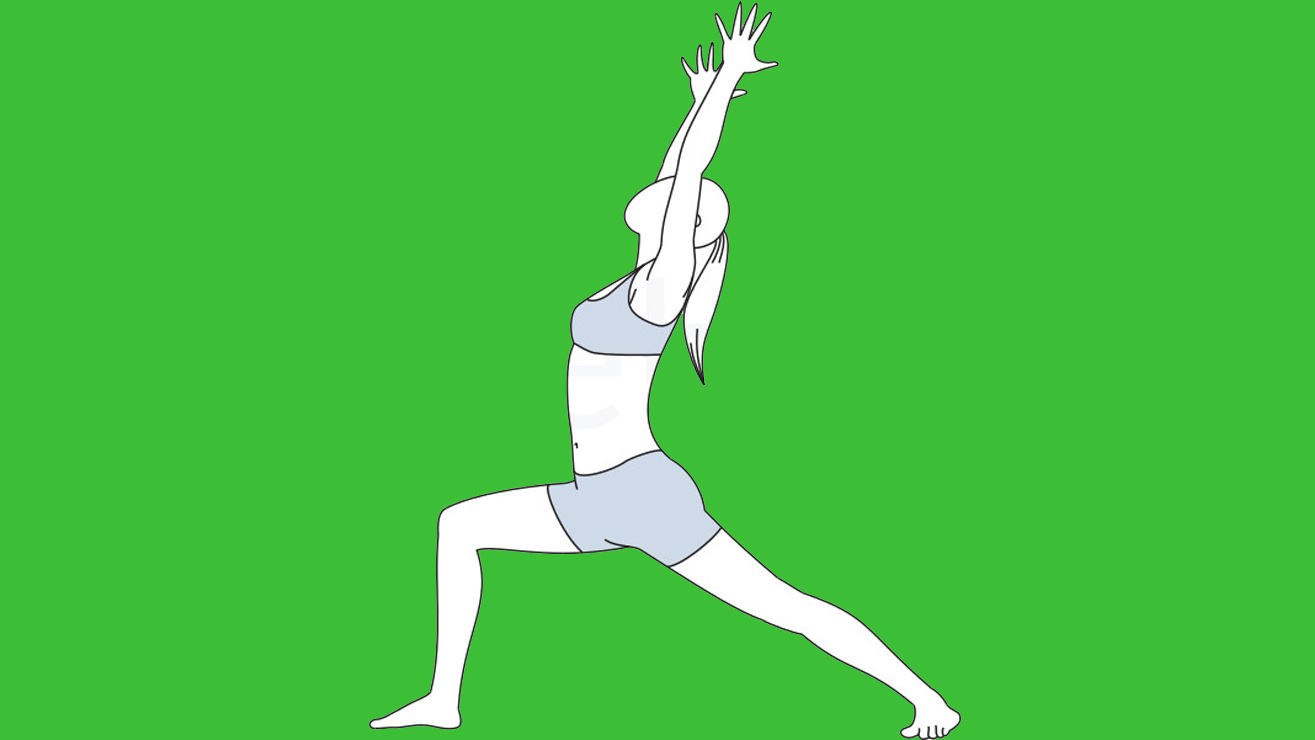
Lying leg buttock stretch
Leg buttock stretch is a simple exercise that will instantly improve your jiu-jitsu experience and performance. During the jiu-jitsu sessions, athletes do a lot of sitting and lying on the mats. As a result, the glutes muscles will overexert and become very tight. In other words, you will become less flexible and eligible for many injuries.
Thus, it’s very important to regularly stretch your glutes after the workout and prevent them from becoming tight and weak over time. Also, you should stretch after the workout or while being warm.
While performing the exercise, avoid pushing your body over the limits and to the point of pain. Although you should feel some discomfort, going through pain doesn’t bring any benefits.
Cossack Squat
Cossack squat is a great stretching exercise for improving flexibility and mobility. Its effectiveness is amazing since you can open the hips and become more flexible. Also, you will strengthen the body muscles that are weak and need gains.
While stretching, you have to retain a proper stance and balance. By doing so, you are also increasing the overall stability and balance as well.
Adding Cossack squat into your regime is a must. If you stretch yourself every day, you will improve your BJJ performance on the mats. On the mats, your moves will become much smoother and the execution of the techniques much better. Once you feel comfortable, start using a light kettlebell to increase the difficulty. This will speed up the process and strengthen the ankles and knees as well.
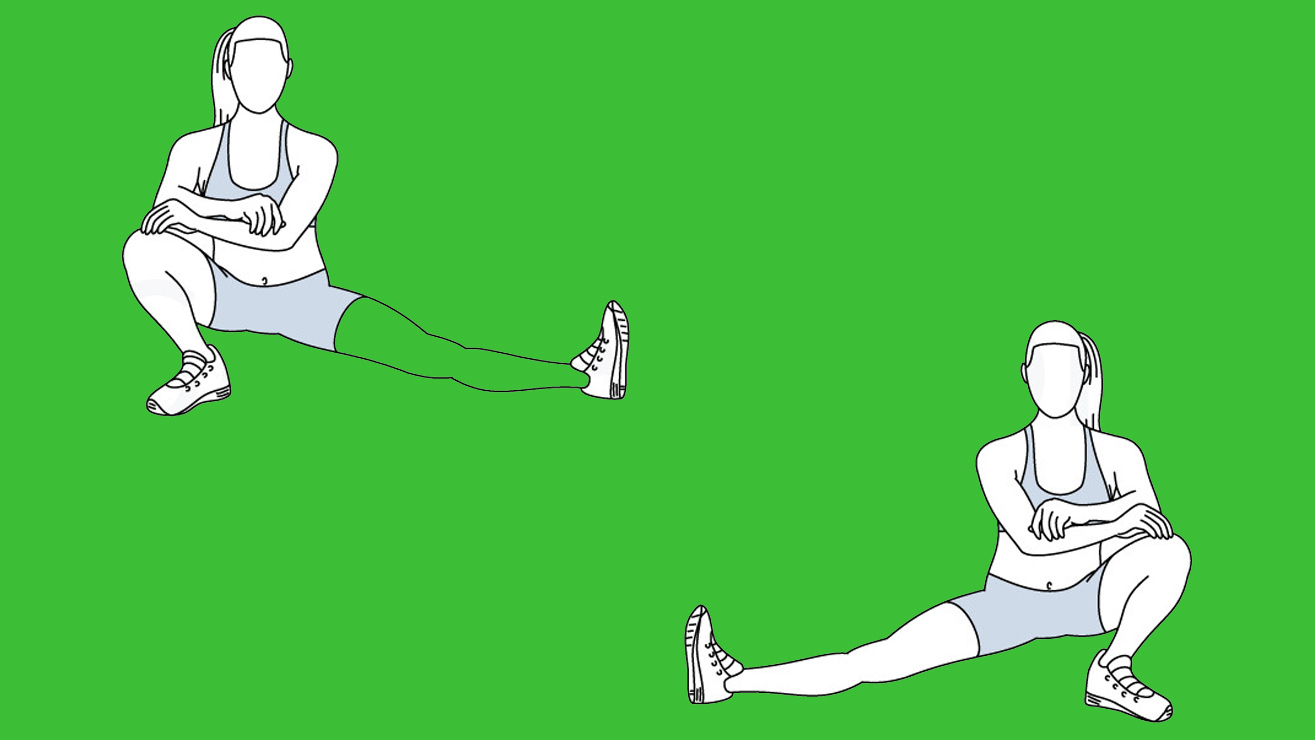
Butterfly Stretch
The butterfly stretch is one of the most common exercises among the athletes with tight hips. It is a great exercise as you can get flexible enough to do splits. You should do a butterfly stretch after the training session or any other lower body workout. It is a very simple exercise and you can perform it many times a day. For beginners, two butterfly stretching sessions for 20 seconds will be enough to start with.
This form of stretching has many benefits since it allows BJJ practitioners to open up their hips. This increases mobility and flexibility during the rolling sessions. Also, the butterfly stretch increases the flexibility of the inner thigh adductor muscles. In other words, this means that a person can improve balance and stability.
As you become more and more flexible, try to put the knees closer to the ground. For some people, this can be uncomfortable but it will make you even more flexible.
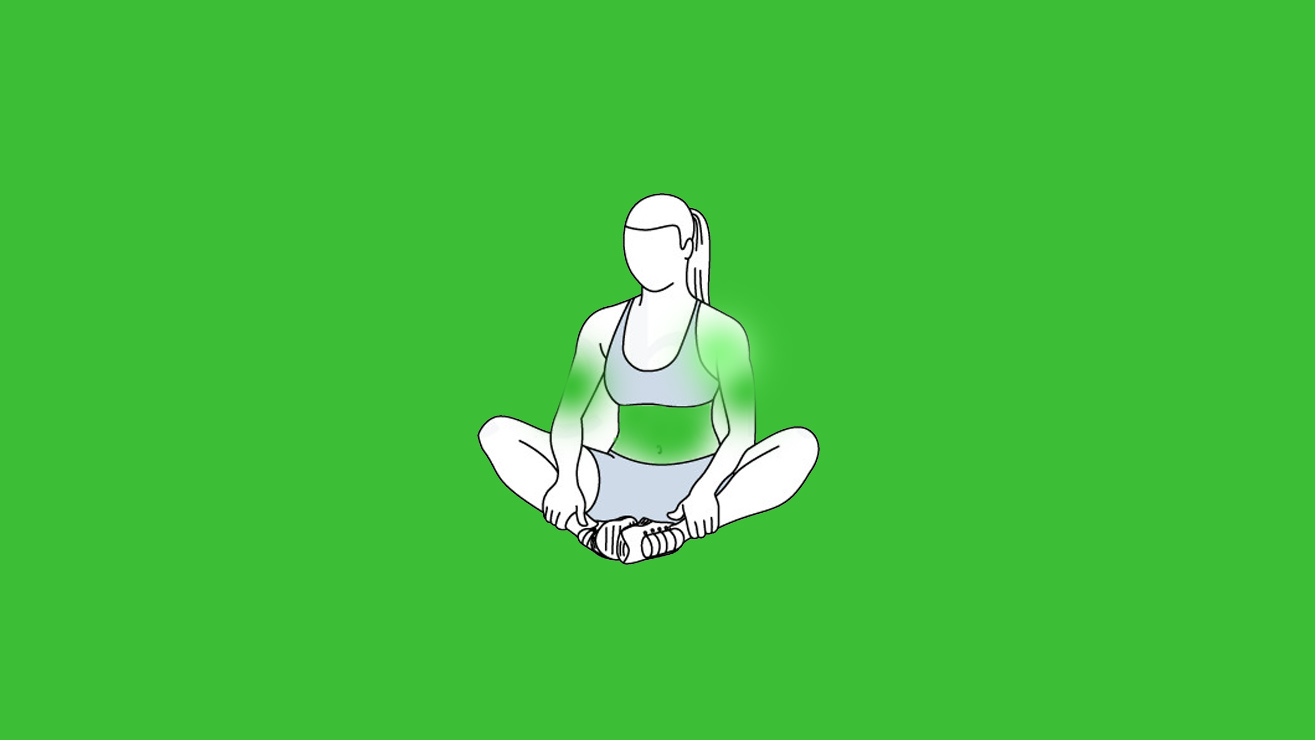
90/90 position exercises
There are not many exercises that reduce back pain and improve flexibility as the 90/90 position exercises do. The researchers at the Northern Alberta Institute of Technology have developed this group of stretching exercises. They are a very simple group of exercises that focuses on reducing the pressure off the lower back. As a result, it will help the athlete to put the hip joints and back into the proper position.
This means a jiu-jitsu athlete can enjoy gains in hip mobility and motion. Like many on this list, it also prevents injuries from happening and boosts the overall performances on the mat.
Plus, there are many 90/90 position exercises to choose from. They are all great and provide similar benefits and improvements. Some of the best 90/90 positions for improving flexibility are:
- Lift Offs
- Hover
- Pails and rails
Downward dog pose (Adho Mukha Svanasana)
Downward dog pose is perhaps the most popular and common yoga pose. Regardless if you are a beginner or experienced yoga student, a downward dog pose is the main part of each and everyone’s yoga training regime.
This exercise stretches the hamstrings, calf muscles and improves the shoulder strength. Thus, a person will become more flexible and strong in both upper and lower body segments. With these benefits, a downward dog pose covers the needs of every jiu-jitsu practitioner.
During the exercise, it’s important to avoid putting a lot of weight on the hands. Instead, spread the weight evenly among the hands and legs. If you want to feel full benefits, focus on performing gently and keeping the knees bent and back straight. This way, you will deeply stretch the hamstrings and shoulders which will enhance the mobility on the mats.
What’s more, downward dog pose is a great way to improve the overall quality of life. It reduces headaches, insomnia, fatigue, and even depression.
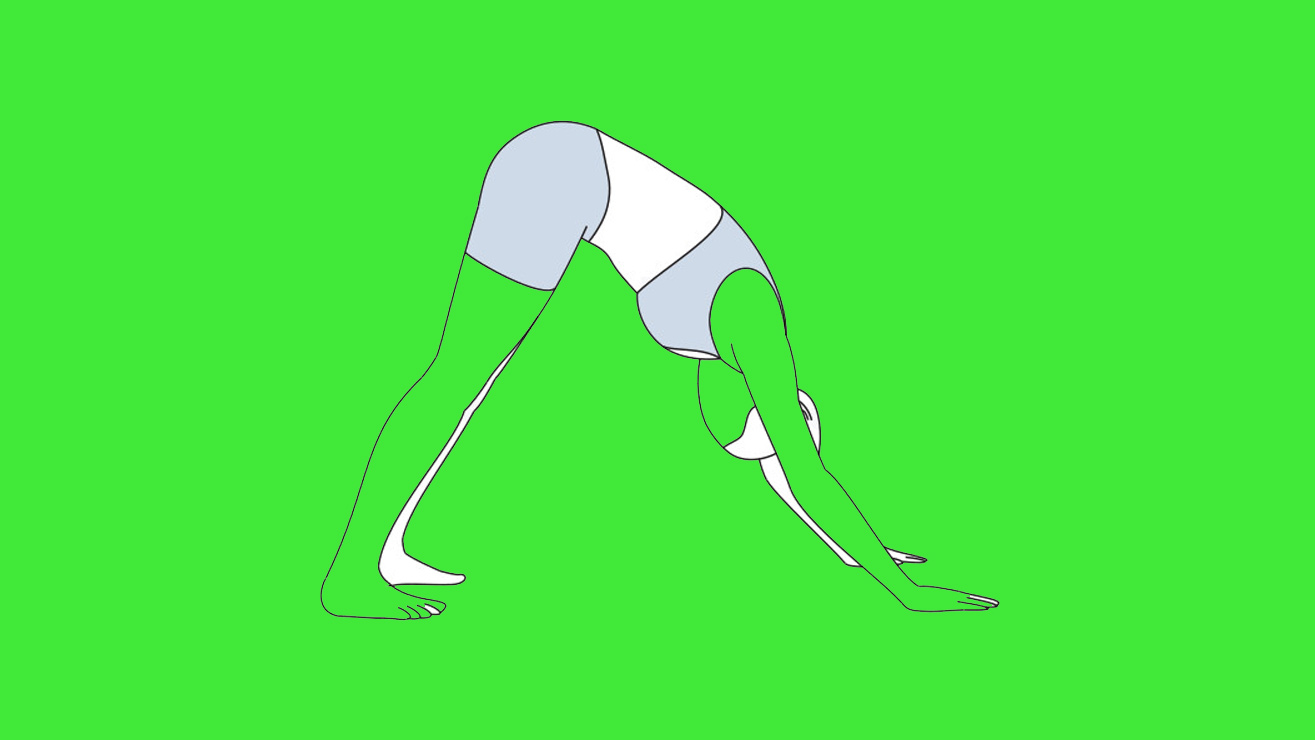
Pigeon pose
Pigeon pose is arguably the best hip opener and a great way to improve the flexibility for BJJ. When done correctly, this exercise will help you stretch the hips, deep glutes and relieve pressure on the lower back.
When the hips are tight, all the stress is transferred to the knees. So, by opening the hips, BJJ athletes become more flexible and can enjoy a wider range of motions. This is crucial because it also prevents the common injuries in BJJ such as ACL (anterior cruciate ligament).
The key to performing the pigeon pose correctly is to balance the weight on the back so that your tie is touching the ground. Also, it’s the most beneficial when performed right after the training session.
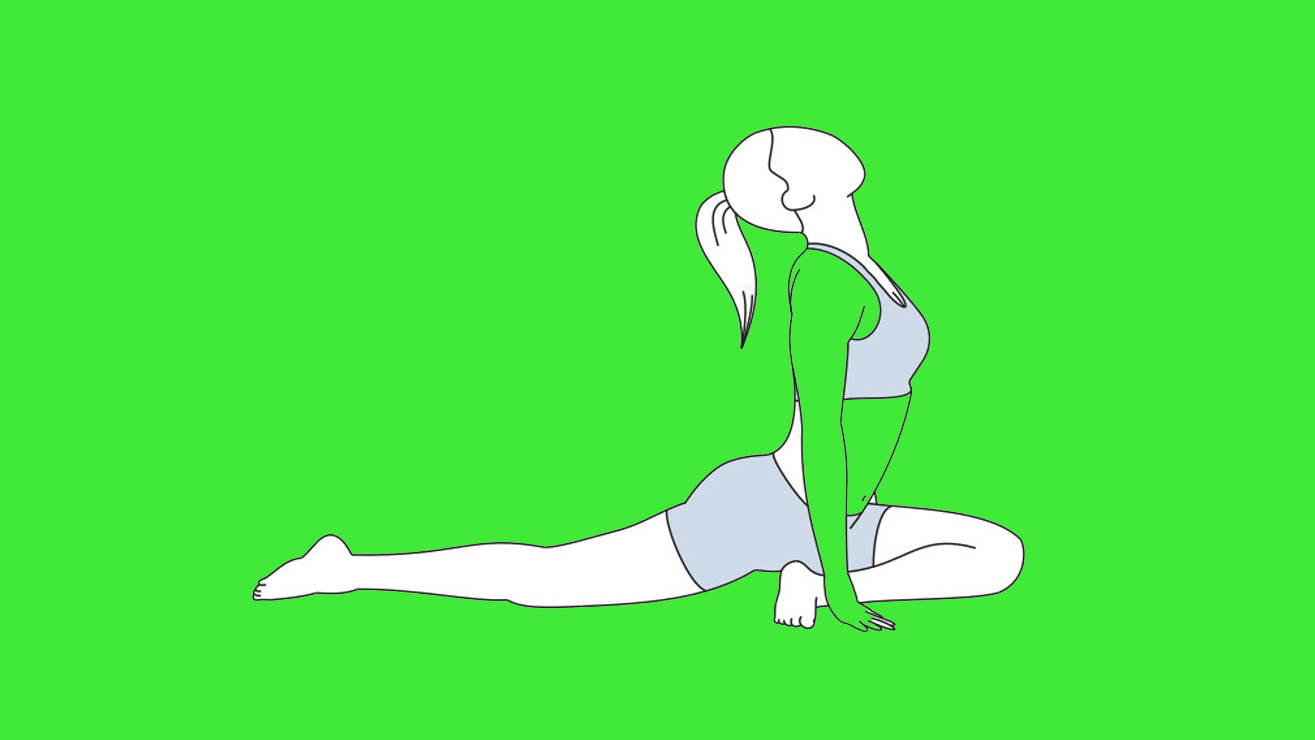
Lizard pose
In addition to the pigeon pose, the lizard is a yoga pose and a great stretching exercise for improving agility in both inner and outer hips. What’s more, performing both Lizard and Pigeon exercises together will produce the maximum effect. Although it looks simple, its benefits are amazing. Apart from stretching the hip ligaments and flexors, Lizard pose strengthens the leg muscles as well.
Some BJJ practitioners may find Lizard pose hard and painful. The intensity depends on the flexibility in the hips. If your hips are tight, began slowly and don’t go over the limits. Once you stretch the hips a bit, keep listening to your body and began stretching further.
Also, don’t forget to breathe! Although this sounds formal, many BJJ practitioners hold their breaths as they move through the Lizard pose. Try to switch a bit of your focus on breathing and finding the right rhythm. This will help to calm your mind and becoming more relaxed.

